Catalytic Converter
Select vehicle to guarantee fit
- Department
- Brands
- Prices

 $1025.99Product Specifications
$1025.99Product Specifications- CARB Compliant: No
- Catalytic Converter Air Tube Adaptable: Not Air Tube Kit Adaptable
- Catalytic Converter Format: Main Catalytic Converter
- Catalytic Converter Housing Material: Steel
- Catalytic Converter Length (in): 38.0
- Catalytic Converter Oxygen Sensor Location: No Port Location
- Catalytic Converter Substrate Material: Ceramic
- Exhaust Component Mount Type: Uses Factory Hangers
- Exhaust Pipe Inlet Connection Type: Flange
- Exhaust Pipe Outlet Connection Type: Flange
- Fitment: Direct OE Replacement
- Internet Product Code (IPC): FD4ED4FE744
- Item Grade: Standard Replacement
- Item has MSDS (SDS): N
- MFG Brand Name: Bosal
- MFG Model # (Series): 096-1992
- MFG Name: Bosal
- Supplier Company Name: Bosal
- UPC: 623920342700
- Part Description: Direct Fit Catalytic Converter And Pipe Assembly

 $3091.00Product Specifications
$3091.00Product Specifications- Air Tube Adaptable: No
- Body Type: Spun
- Clamp Included: Yes
- Color/Finish: Stainless Steel
- Converter Quantity: 4
- Gasket or Seal Included: Yes
- Hangers Included: No
- Heat Shield Attached: Yes
- Heat Shield Included: Yes
- Heat Shield Material: Aluminized Steel
- Inlet Attachment: Bolt-On
- Main Piping Diameter: 2.5
- Material: Stainless Steel
- Mounting Hardware Included: Yes
- Outlet Attachment: Bolt-On
- Overall Length: 41.625
- Oxygen Sensor Location: Pre and Post Converter
- Sensor Port Count: 4
- Series: California
- Substrate Material: Ceramic
- Title: California Direct-Fit
- Type: Direct-Fit
- UPC: 841380081797
- Part Description: OBDII Direct Fit Catalytic Converter


Davico® Direct Fit Catalytic Converter
PartNumber: 19365$925.78Product Specifications- Gaskets Included: Not Required
- Inlet Type: 2 Bolt Loose Flange
- Large Pkg. Fee: No
- Number of O2 Sensors: 1
- Outlet Type: Slip Fit
- Over All Length: 36.25
- UPC: 841809119568
- Use Davico Decarbonizing Induction Kit 1540ea: Yes
- Part Description: Direct Fit Catalytic Converter

 $2110.00Product Specifications
$2110.00Product Specifications- Air Tube: No
- Catalytic Converter Body Length: 12"
- Catalytic Converter Format: Pre-Catalytic Converter and Main Catalytic Converter
- Catalytic Converter Overall Length: 48.8"
- Catalytic Converter Oxygen Sensor Location: Pre and Post Converter
- Catalytic Converter Substrate Material: Ceramic
- Catalytic Converter Width: 7"
- Catalytic Inlet Diameter: 2"
- Catalytic Outlet Diameter: 3"
- Catalytic Series: OBDII
- Converter Body Material: Stainless Steel
- Converter Configuration: Direct Fit
- Converter Quantity: 2
- Inlet Connection Type: Bolt-On
- Installation Complexity: Bolt-on. Do it Yourself
- Main Piping Diameter: 3"
- O2 Sensor Port: Yes
- Outlet Connection Type: Bolt-On
- Part Description: OBDII Direct Fit Catalytic Converter


Davico® Direct Fit Catalytic Converter
PartNumber: 17299$682.36Product Specifications- Gaskets Included: Yes
- Height: 5.5
- Inlet Type: Fixed Flange
- Large Pkg. Fee: No
- Number of O2 Sensors: 2
- Outlet Type: 2 Bolt Fixed Flange
- Over All Length: 18
- Packaging Type: Boxed
- UPC: 841809110510
- Use Davico Decarbonizing Induction Kit 1540ea: Yes
- Width: 8
- Part Description: Direct Fit Catalytic Converter
OEM (Genuine) Gasket, Exhuast Pipe
PartNumber: 18302-SP0-003$12.23 MSRP:$17.27You Save: $5.04 (30%)Product Specifications- Item Dimensions: 3.0 x 3.1 x 0.2 inches
- Item Weight: 0.40 Pounds
- Fitment Type: Direct Replacement
- Part Description: Gasket, Exhuast Pipe

 $893.96Product Specifications
$893.96Product Specifications- CARB Compliant: No
- Catalytic Converter Air Tube Adaptable: Not Air Tube Kit Adaptable
- Catalytic Converter Format: Main Catalytic Converter
- Catalytic Converter Housing Material: Stainless Steel
- Catalytic Converter Length (in): 21.0
- Catalytic Converter Oxygen Sensor Location: No Port Location
- Catalytic Converter Substrate Material: Ceramic
- Exhaust Component Mount Type: Uses Factory Hangers
- Exhaust Pipe Inlet Connection Type: Flange or slip fit
- Exhaust Pipe Outlet Connection Type: Flange or slip fit
- Fitment: Direct OE Replacement
- Internet Product Code (IPC): 049B8C3CD6D
- Item Grade: Standard Replacement
- Item has MSDS (SDS): N
- MFG Brand Name: Bosal
- MFG Model # (Series): 096-1447
- MFG Name: Bosal
- Supplier Company Name: Bosal
- UPC: 623920330141
- Part Description: Premium Load Exhaust Manifold With Integrated Catalytic Converter


MagnaFlow® Direct Fit Catalytic Converter
PartNumber: 4451419$2201.00Product Specifications- Body Type: Spun
- Clamp Included: Yes
- Color/Finish: Stainless Steel
- Material: Stainless Steel
- Mounting Hardware Included: Yes
- Series: California
- Title: California Direct-Fit
- Type: Direct-Fit
- UPC: 888563104157
- Part Description: Direct Fit Catalytic Converter
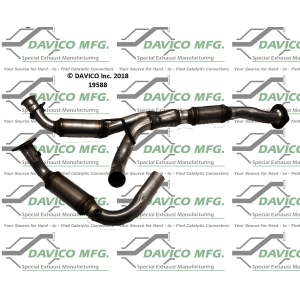
 $588.06Product Specifications
$588.06Product Specifications- Catalytic Converter Overall Length: 34"
- Converter Configuration: Direct Fit
- Inlet Type A: 3 Bolt Fixed Flange
- Inlet Type B: 3 Bolt Loose Flange
- Outlet Type: 2 Bolt Fixed Flange
- Position: Center
- UPC: 841809134134
- Part Description: Direct Fit Catalytic Converter and Pipe Assembly


MagnaFlow® Direct Fit Catalytic Converter
PartNumber: 4451453$1925.00Product Specifications- Body Type: Spun
- Clamp Included: Yes
- Color/Finish: Stainless Steel
- Material: Stainless Steel
- Mounting Hardware Included: Yes
- Series: California
- Title: California Direct-Fit
- Type: Direct-Fit
- UPC: 888563103839
- Part Description: Direct Fit Catalytic Converter


MagnaFlow® Direct Fit Catalytic Converter
PartNumber: 458018$2451.00Product Specifications- Air Tube: No
- Catalytic Converter Format: Pre-Catalytic Converter and Main Catalytic Converter
- Catalytic Converter Overall Length: 60"
- Catalytic Converter Substrate Material: Ceramic
- Catalytic Converter Width: 12.38"
- Catalytic Series: OBDII
- Converter Body Material: Stainless Steel
- Converter Configuration: Direct Fit
- Converter Quantity: 1
- Inlet Connection Type: Bolt-On
- Installation Complexity: Bolt-on. Do it Yourself
- UPC: 841380081865
- Part Description: Direct Fit Catalytic Converter
- $10.08 MSRP:
$14.22You Save: $4.14 (30%)Product Specifications- Other Names: Converter & Pipe Gasket, Front Pipe Gasket
- Item Dimensions: 2.6 x 2.5 x 0.2 inches
- Item Weight: 0.40 Pounds
- Fitment Type: Direct Replacement
- Replaces: 18212-SA7-004
- Part Description: Gasket, Exhuast Pipe (Ishino)

 $546.63Product Specifications
$546.63Product Specifications- Catalytic Converter Body Height: 7.75"
- Catalytic Converter Overall Length: 42.25"
- Catalytic Converter Width: 32.25"
- Converter Configuration: Direct Fit
- Inlet Type: 2 Bolt Loose Flange (2)
- O2 Sensor Port: Yes
- Position: Front
- UPC: 841809118790
- Part Description: Direct Fit Catalytic Converter and Pipe Assembly

 $1781.00Product Specifications
$1781.00Product Specifications- Catalytic Series: OBDII
- Converter Configuration: Direct Fit
- UPC: 888563106199
- Part Description: OBDII Direct Fit Catalytic Converter
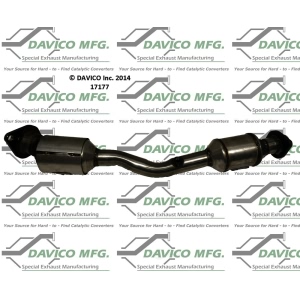
 $504.22Product Specifications
$504.22Product Specifications- Catalytic Converter Body Height: 6.5"
- Catalytic Converter Overall Length: 34"
- Catalytic Converter Width: 7.25"
- Converter Configuration: Direct Fit
- Inlet Type: 2 Bolt Fixed Flange
- O2 Sensor Port: Yes
- Outlet Type: 2 Bolt Fixed Flange
- Packaging Type: Boxed
- Position: Center
- Part Description: Direct Fit Catalytic Converter and Pipe Assembly

 $1523.00Product Specifications
$1523.00Product Specifications- Air Tube Adaptable: No
- Body Material: Stainless Steel
- Body Type: Spun
- Clamp Included: Yes
- Color/Finish: Stainless Steel
- Converter Quantity: 2
- Inlet Attachment: Bolt-On
- Main Piping Diameter: 3
- Material: Stainless Steel
- Mounting Hardware Included: Yes
- Outlet Attachment: Clamp-On
- Overall Length: 47.4
- Oxygen Sensor Location: None
- Series: California
- Substrate Material: Ceramic
- Title: California Direct-Fit
- Type: Direct-Fit
- UPC: 841380084095
- Part Description: Pre-OBDII Direct Fit Catalytic Converter

 $481.24Product Specifications
$481.24Product Specifications- Gaskets Included: not included
- Height: 10.5 in.
- Large Pkg. Fee: No
- Over All Length: 52.25 in.
- UPC: 841809119070
- Use Davico Decarbonizing Induction Kit 1540ea: Yes
- Width: 27.875 in.
- Part Description: Direct Fit Catalytic Converter and Pipe Assembly
- $10.12 MSRP:
$14.22You Save: $4.10 (29%)Product Specifications- Other Names: Converter & Pipe Gasket, Front Pipe Gasket
- Item Dimensions: 2.6 x 2.5 x 0.2 inches
- Item Weight: 0.40 Pounds
- Fitment Type: Direct Replacement
- Replaces: 18212-SA7-004
- Part Description: Gasket, Exhaust Pipe (Ishino)
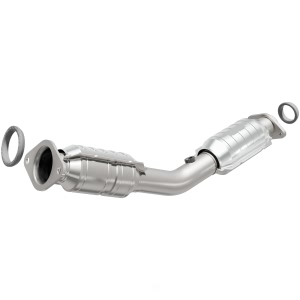
 $1577.00Product Specifications
$1577.00Product Specifications- Air Tube: No
- Catalytic Converter Format: Pre-Catalytic Converter and Main Catalytic Converter
- Catalytic Converter Substrate Material: Ceramic
- Catalytic Series: OBDII
- Converter Body Material: Stainless Steel
- Converter Configuration: Direct Fit
- Converter Quantity: 1
- Inlet Connection Type: Bolt-On
- Installation Complexity: Bolt-on. Do it Yourself
- UPC: 888563072876
- Part Description: OBDII Direct Fit Catalytic Converter

 $463.02Product Specifications
$463.02Product Specifications- Inlet 1 Gsk.: No
- Inlet 1 Type: 3 Bolt Fixed Flange
- Inlet 2 Gsk.: No
- Inlet 2 Type: 2 Bolt Fixed Flange
- Large Pkg. Fee: No
- Number of O2 Sensors: 2
- Outlet 1 Type: 2 Bolt Fixed Flange
- Over All Length: 56
- UPC: 841809115676
- Use Davico Decarbonizing Induction Kit 1540ea: Yes
- Part Description: Direct Fit Catalytic Converter and Pipe Assembly

 $1571.00Product Specifications
$1571.00Product Specifications- Air Tube Adaptable: No
- Body Material: Stainless Steel
- Body Type: Spun
- Color/Finish: Stainless Steel
- Converter Quantity: 2
- Heat Shield Included: Yes
- Inlet Attachment: Bolt-On
- Main Piping Diameter: 2.25
- Material: Stainless Steel
- Mounting Hardware Included: Yes
- Outlet Attachment: Bolt-On
- Overall Length: 19
- Oxygen Sensor Location: Post Converter
- Series: California
- Substrate Material: Ceramic
- Title: California Direct-Fit
- Type: Direct-Fit
- UPC: 888563090818
- Part Description: OBDII Direct Fit Catalytic Converter

 $409.93Product Specifications
$409.93Product Specifications- Catalytic Converter Body Height: 9"
- Catalytic Converter Overall Length: 49"
- Catalytic Converter Width: 15"
- Converter Configuration: Direct Fit
- Inlet Type: 2 Bolt Spin Flange
- O2 Sensor Port: Yes
- Outlet Type: Slip Fit
- Packaging Type: Unboxed
- Position: Front Passenger Side
- UPC: 841809116291
- Part Description: Direct Fit Catalytic Converter and Pipe Assembly
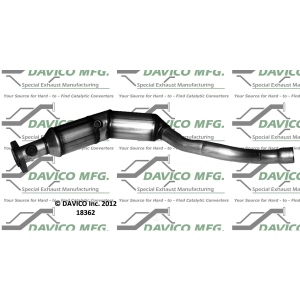
 $451.84Product Specifications
$451.84Product Specifications- Gaskets Included: not included
- Height: 11 in.
- Inlet Type: 2 bolt spin flange
- Large Pkg. Fee: No
- Number of O2 Sensors: 2
- Outlet Type: slide on
- Over All Length: 37.5 in.
- Packaging Type: Unboxed
- UPC: 841809115805
- Use Davico Decarbonizing Induction Kit 1540ea: Yes
- Width: 4 in.
- Part Description: Direct Fit Catalytic Converter and Pipe Assembly
OEM (Genuine) Gasket, Muffler
PartNumber: 18303-SM4-020$13.78 MSRP:$19.45You Save: $5.67 (30%)Product Specifications- Item Dimensions: 2.2 x 2.2 x 0.1 inches
- Item Weight: 0.40 Pounds
- Fitment Type: Direct Replacement
- Replaces: 18303-SM4-010
- Part Description: Gasket, Muffler

 $730.28Product Specifications
$730.28Product Specifications- CARB Compliant: No
- Catalytic Converter Air Tube Adaptable: Not Air Tube Kit Adaptable
- Catalytic Converter Format: Main Catalytic Converter
- Catalytic Converter Housing Material: Stainless Steel
- Catalytic Converter Length (in): 19.0
- Catalytic Converter Oxygen Sensor Location: No Port Location
- Catalytic Converter Substrate Material: Ceramic
- Exhaust Component Mount Type: Uses Factory Hangers
- Exhaust Pipe Inlet Connection Type: Flange or slip fit
- Exhaust Pipe Outlet Connection Type: Flange or slip fit
- Fitment: Direct OE Replacement
- Internet Product Code (IPC): 0578330B0C1
- Item Grade: Standard Replacement
- Item has MSDS (SDS): N
- MFG Brand Name: Bosal
- MFG Model # (Series): 099-2636
- MFG Name: Bosal
- Part Type #2: Import Converters
- Supplier Company Name: Bosal
- UPC: 623920343714
- Part Description: Exhaust Manifold With Integrated Catalytic Converter
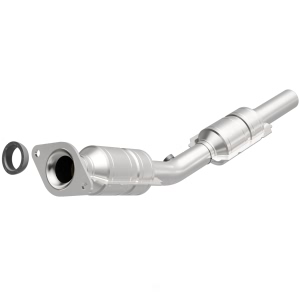
 $1299.00Product Specifications
$1299.00Product Specifications- Air Tube Adaptable: No
- Body Material: Stainless Steel
- Body Type: Spun
- Color/Finish: Stainless Steel
- Converter Quantity: 2
- Inlet Attachment: Bolt-On
- Main Piping Diameter: 2.25
- Material: Stainless Steel
- Mounting Hardware Included: Yes
- Outlet Attachment: Clamp-On
- Overall Length: 32.1
- Oxygen Sensor Location: Post Converter
- Series: California
- Substrate Material: Ceramic
- Title: California Direct-Fit
- Type: Direct-Fit
- UPC: 888563014074
- Part Description: OBDII Direct Fit Catalytic Converter

 $421.37Product Specifications
$421.37Product Specifications- Catalytic Converter Body Height: 11.5"
- Catalytic Converter Overall Length: 45.5"
- Catalytic Converter Width: 24"
- Converter Configuration: Direct Fit
- Inlet Type A: 2 Bolt Spin Flange
- Inlet Type B: Slip Fit
- O2 Sensor Port: Yes
- Outlet Type: Slip Fit
- Packaging Type: Unboxed
- Position: Passenger Side
- UPC: 841809133298
- Part Description: Direct Fit Catalytic Converter and Pipe Assembly

 $1302.00Product Specifications
$1302.00Product Specifications- Air Tube: No
- Body Type: Spun
- Catalytic Converter Body Height: 4"
- Catalytic Converter Body Length: 13.25"
- Catalytic Converter Body Shape: Round
- Catalytic Converter Overall Length: 13.25"
- Catalytic Converter Oxygen Sensor Location: Midbed
- Catalytic Converter Substrate Material: Ceramic
- Catalytic Converter Width: 4"
- Catalytic Inlet Diameter: 2.25"
- Catalytic Outlet Diameter: 2.25"
- Catalytic Series: OBDII
- Converter Body Material: Stainless Steel
- Converter Configuration: Universal Fit
- Heat Shield Attached: No
- Inlet Attachment: Weld-On
- Inlet Orientation: Straight
- Inlet Quantity: 1
- O2 Sensor Port: Yes
- Outlet Attachment: Weld-On
- Outlet Orientation: Straight
- Outlet Quantity: 1
- Part Description: OBDII Universal Fit Round Body Catalytic Converter


Davico® Direct Fit Catalytic Converter
PartNumber: 17116$452.35Product Specifications- Inlet Type: 3 Bolt Fixed Flange
- Large Pkg. Fee: No
- Number of O2 Sensors: 1
- Outlet Type: 2 Bolt Fixed Flange
- Packaging Type: Unboxed
- UPC: 841809108265
- Use Davico Decarbonizing Induction Kit 1540ea: Yes
- Part Description: Direct Fit Catalytic Converter
OEM (Genuine) Converter
PartNumber: 18160-RAA-A11$1899.18 MSRP:$2703.60You Save: $804.42 (30%)Product Specifications- Item Dimensions: 27.6 x 10.9 x 9.3 inches
- Item Weight: 11.30 Pounds
- Fitment Type: Direct Replacement
- Replaces: 18160-RAA-A10
- Part Description: Converter
About Catalytic Converter
The catalytic converter is an important part of the vehicle's exhaust system since it converts harmful gases into exhaust gases. Many modern vehicles have a catalytic converter that has a honeycomb interior, while older cars have a ceramic beads design. The purpose of the design is to slow down the speed at which the exhaust gases are traveling.
Catalytic converter typesThere are two types of cats including the 2-way and three-way catalytic converters that differ in abilities. The 2-way catalytic converter has the job of oxidizing the carbon monoxide as well as the hydrocarbons into carbon dioxide. It is mainly used in diesel engines to reduce emissions, but it was also used in older vehicles since they couldn't control the oxides of nitrogen.
The three-way cat has the benefit of being able to control the emissions. Due to the reduction of oxidation, many countries have adopted the emission regulation that the three-way converter offers to the user. It receives feedback on the mixture control from a computerized closed-loop fuel injection system.
Catalytic converter principlesWhen catalytic converters were introduced it was accompanied by a carburetor which provided a rich ratio of air and fuel. In which case it would lead to the exhaust stream being insufficient for the catalytic reaction. Now modern vehicles have an electronic fuel injection system that does not require a system in their exhaust. Information from the oxygen sensor to the engine control unit adjusts the fuel injection to prevent an overload of oxygen.
Common issues with a faulty catalytic converterA faulty catalytic converter can lead to poor engine performance, rattling noise in the engine, and engine misfires.




